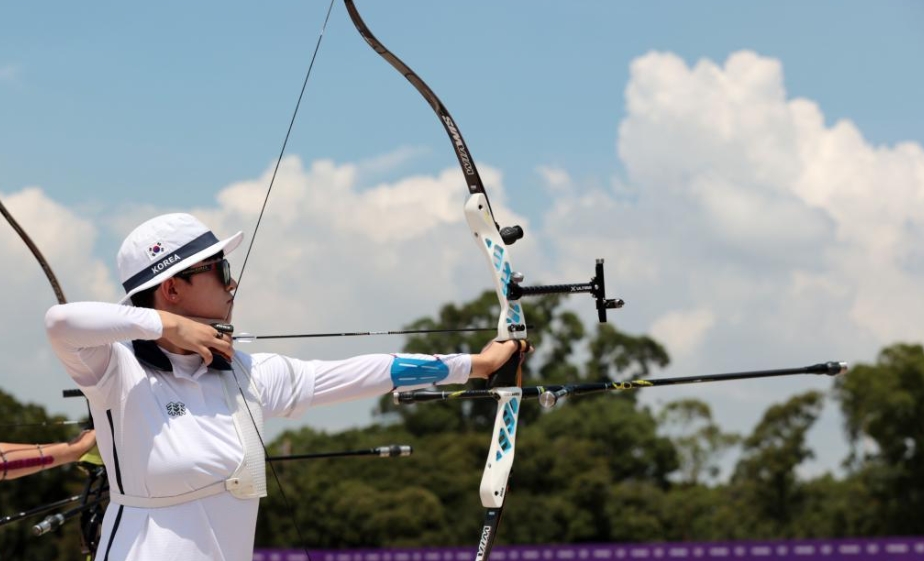Release time:2025-05-10 14:40:55Clicks:author:SPG ArcheryMain categories:Bows, Arrows, Archery Accessories

At the moment of releasing the finger, the bowstring will exert a very large force on the tail of the arrow. If the bite of the tail and the bowstring is too loose or too tight, it should cause the tail of the arrow shaft to vibrate violently and crack. In addition, if a bow with a large poundage uses a softer arrow, this may also cause this situation. All vibrations are released at the end of the object, which is the "whip effect" in physics. In this way, when the arrow is on the target, the arrow shaft vibrates violently, and the vibration is released at the tail of the arrow in the form of a vibration wave, which causes the tail of the arrow to have a tangential reciprocating motion relative to the axis of the arrow shaft, resulting in cracks at the end of the arrow shaft.
Common answers for bare bows, recurve bows, and compound bows:
1. The reaction force of the bow is too large, the number of strands is too thin, and the string guides energy too fast. The contestants failed to accurately measure the actual poundage of their bows, or the poundage measurement was not accurate enough. It is common that high-tension bows use strings with thinner strands.
2. The string guard is too thin, the tail groove is too loose, and the string guides energy without concentration.
3. The string guard is too thick, the tail groove is too tight, and it is not easy to detach after the string guides the energy. Different brands of arrow tails are soft and hard, and the tail grooves are large and small. It is better to establish your own specifications for use.
4. The arrow shaft is too soft and the bend is too large. It cannot withstand the reaction force of the bow and the speed of the string guide, and slowly leaves the arrow stand and side pads.
5. The arrow shaft is too hard and the bend is too small. It cannot withstand the reaction force of the bow and the speed of the string guide, and quickly leaves the arrow stand and side pads.
6. The tail of the arrow shaft is not trimmed when cutting a new arrow shaft, and the arrow shaft has defects when it leaves the factory.
7. The spring of the side pad is too hard or too soft. The elasticity of the side pad should be adjustable at any time. Many players are afraid of being maliciously adjusted by others, so they are deadlocked. Three springs with different elasticity are used when starting high-level bow adjustment.
8. The tail of the arrow seat is too short or too soft. It is best to use a magnetic arrow stand made of iron wire, which is less troublesome.
9. The arrow point is too low or too high. The arrow point is more correct when measured with a ruler than when calculated by hand. 10. The finger guard is too hard and too long, and the twisting arc of the string is too large. The finger guard also needs to be maintained and repaired. Top players use at least 4 in turn.
11. The reaction force energy of the upper and lower bow arms is uneven and the difference is too large.
12. The center string distance is too large or too small.
13. The upper and lower bow gears are not adjusted correctly.
The answer that only occurs in bare bows:
1. The finger position difference from long distance to short distance is too large, and the difference in the length of the full bow position is too large.
2. The difference in the upper and lower bow gear distance is too large.
3. When shooting arrows, the push point from long distance to short distance is inconsistent.
4. The position is inconsistent each time.
The answer that only occurs in compound bows:
1. For bows with short axis distance, adjust to a long draw length and use a long arrow shaft.
2. For a long-axis bow, the main string is too thin and too few strands.
3. The bow hand pushes the wrong point and does not push in a straight line.
4. The height of the arrow point and the D ring is not correct.
5. The upper and lower wheels do not output to the highest point synchronously, and the upper and lower wheels do not synchronize to the stop point when the bow is fully drawn.
6. For a bow with a soft cam, the bow is not consistent every time it is fully drawn.